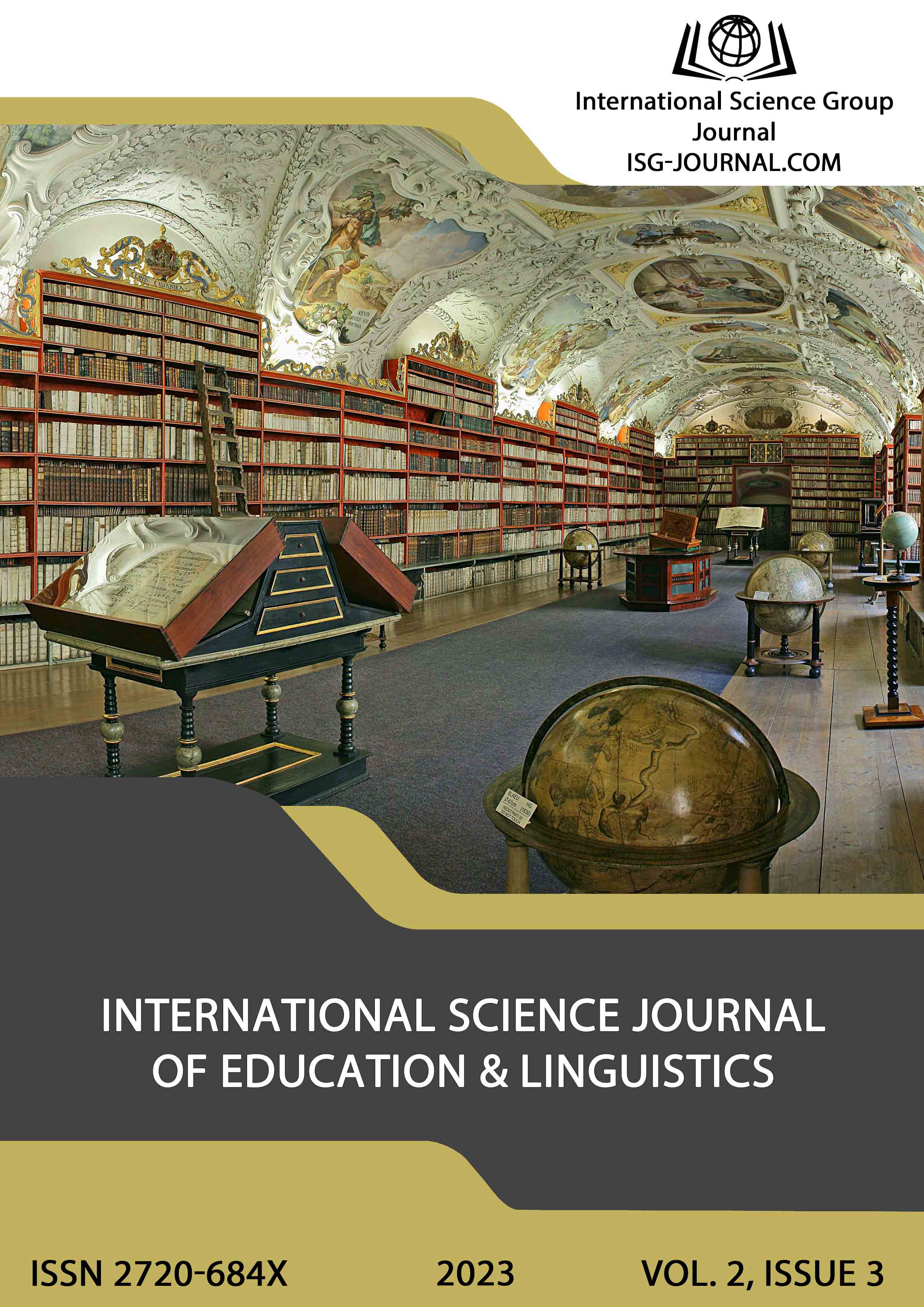Spatial-slang vocabulary as a component of the language portrait of modern students
DOI:
https://doi.org/10.46299/j.isjel.20230203.09Keywords:
language portrait, non-normative spatial vocabulary, youth slang, youth language culture, modern studentsAbstract
In the proposed research paper, Svitlana Romanchuk examines the language portrait of modern students. Under the language portrait, she proposes to understand a communicative (linguistic) personality embodied in language, which is a representative of a certain social community (environment). The lexicon of a modern young person combines various elements. In addition to commonly used words, it includes slang, reduced and spatial vocabulary, foreign words (most often anglicisms appearing in various modifications and abbreviations), obscene interjections, invectives, emotional and expressive characteristics, parasite words, dysphemisms generally create a special (understated) stylistic coloring of the language. The author pays considerable attention to jargons, which are considered a specific form of language realization of a communicative personality. They reflect the socio-historical conditions of life of the youth group, the level of its culture, moral attitudes, ideas about life values, landmarks, a system of evaluations, events, facts, way of life and many others. Svitlana Romanchuk analyzes the structure of youth slang, characterizes its features. Valuable for scientific description is the determination of the level of use of slang vocabulary in various means of information technology, in particular on the Internet and during communication in chat rooms on a mobile phone. The linguistic portrait of a modern young person (especially a student) cannot be imagined without precedent texts - quotations from famous literary works, idioms, catchphrases, proverbs and sayings, slogans, phrases from popular songs and movies, commercials, etc. The article states that the use of precedent texts makes the speech of young people vivid, non-trivial, loose, witty, and contributes to the improvement of communicative and intercultural competence. The scientific study also analyzed dysphemisms, parasitic words, argotisms, obscene and criminal vocabulary, elements of vulgar language and even swearing, which are quite common not only in the fashion environment, but also in the mass media space. It is concluded that there is an objective contradiction between the demands of society and the insufficient communicative competence of future specialists, which does not allow them to successfully resist the spatial and jargon element and other negative processes of the development of the modern Ukrainian language and the formation of a high linguistic culture of modern students.
References
Культура української мови (1990.). Довідник / за ред. В. М. Русанівського. К., 304 с.
Голик, С. (2013.). Мовна особистість як об’єкт лінгвокультурологічних досліджень. Вісник Львівського університету. Серія : Іноземні мови. Вип. 21. С. 258–264.
Папіш, В. А. (2022.). Мовна особистість та вишукана мовна особистість як ключові поняття теорії лінгвоперсонології. Наукові записки Національного університету «Острозька академія», серія «Філологія». Вип. 13(81). С. 306-310.
Абіх, І.В., Абіх, О.П. (2016). Проблеми культури мовлення студентів у контексті підготовки майбутніх фахівців. Збірник наукових праць ДонНАБА.2016 (5). Випуск 4. С.55-59.
Секрет, І. (2010.). Семантичні аспекти американського студентського сленгу // Наукові записки. Випуск 89 (1). Серія: Філологічні науки (мовознавство): У 5 ч. Кіровоград: РВВ КДПУ ім. В.Винниченка, С. 80-84.
Балабін, В.В. (2002). Сучасний американський військовий сленг як проблема перекладу: автореф. дис. на здобуття канд. філол. наук: 10.02.16; Київ. нац. ун-т ім. Т.Шевченка. К.,. 19 с.
Василенко, Ю.А. (2009.). Сучасний український молодіжний сленг. Львівський національний університет імені Івана Франка. № 6. С. 16.
Годун, Н.. Ділова українська мова з елементами професійного та розмовного сленгу в молодому середовищі http://journlib.univ.kiev.ua/index.php?act=article&article=2056
Ставицька, Л.О. (2001). Проблеми вивчення жаргонної лексики: Соціолінгвістичний аспект. Українська мова. К.,. № 1. С. 55-68.
Дорда, В. (2009). Співвідношення студентського сленгу з загальним та спеціальним сленгом. Наукові записки [Кіровоградського державного педагогічного університету імені Володимира Винниченка]. Сер. : Філологічні науки. Вип. 81(1). С.329-333. http://nbuv.gov.ua/UJRN/Nzs_2009_81%281%29__81
Bloomfield, L. Language. (1984). New York: Holt, Reinhart and Winston. 566 p.
Partridge, E. Slang Today and Yesterday. (1970). London: Routledge & Kegan Paul Ltd.. 381p.
Голубовська, І.О. (2008). Мовна особистість як лінгвокультурний феномен. Studia Linguistica. Зб наук. пр. К.,. Вип. 1. С.25-33.
Гончар, О. Сьогодні Міжнародний день рідної мови. https://shatsk.rayon.in.ua/news/23493-sogodni-mizhnarodnii-den-ridnoyi-movi
Бех, І. Д. (1997). Цінності як ядро особистості // Цінності освіти і виховання: Наук.–метод. зб. / За ред. О. В. Сухомлинської. К.,.С. 8–11.
Downloads
Published
How to Cite
Issue
Section
License
Copyright (c) 2023 Світлана Романчук

This work is licensed under a Creative Commons Attribution 4.0 International License.





